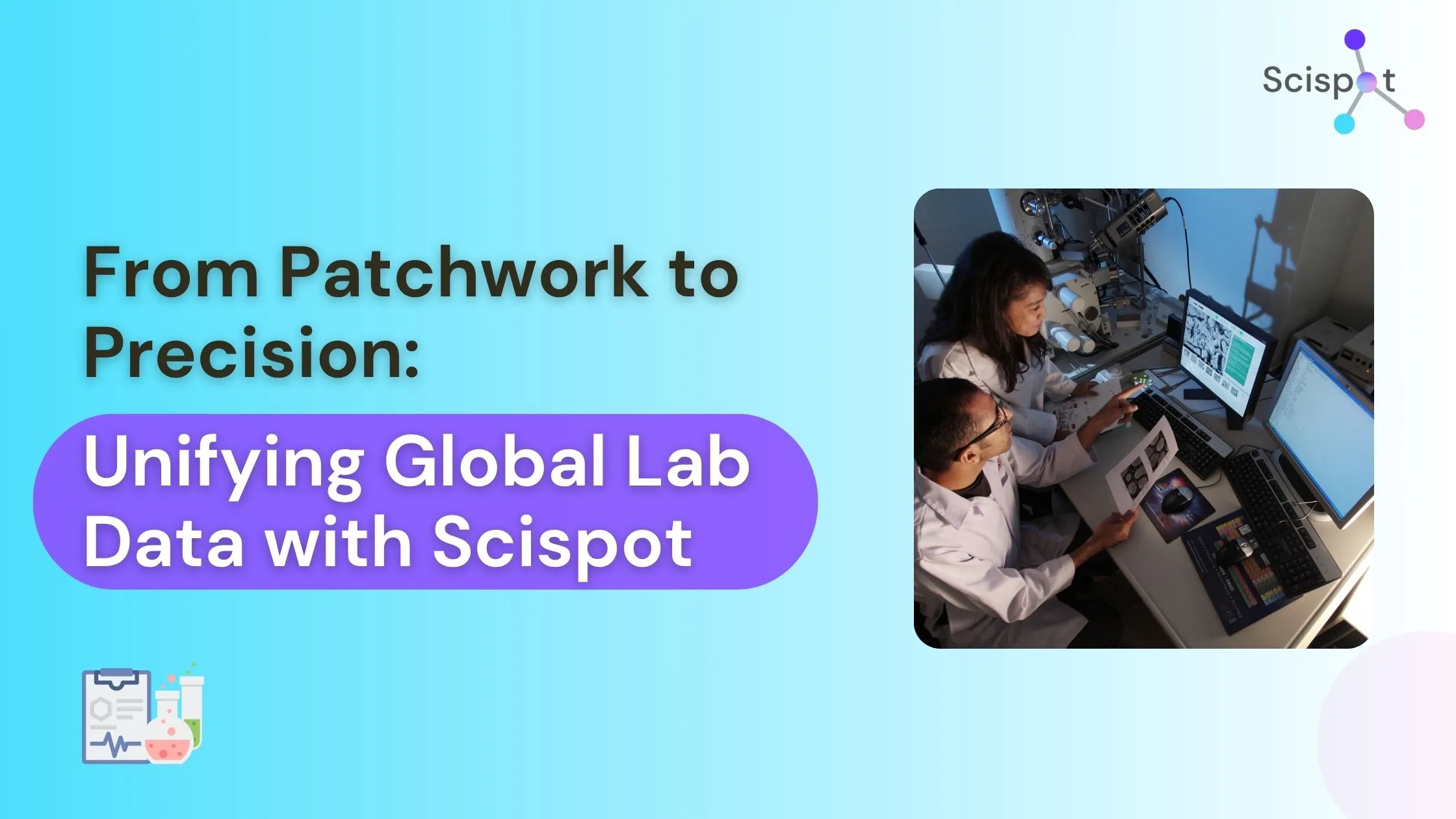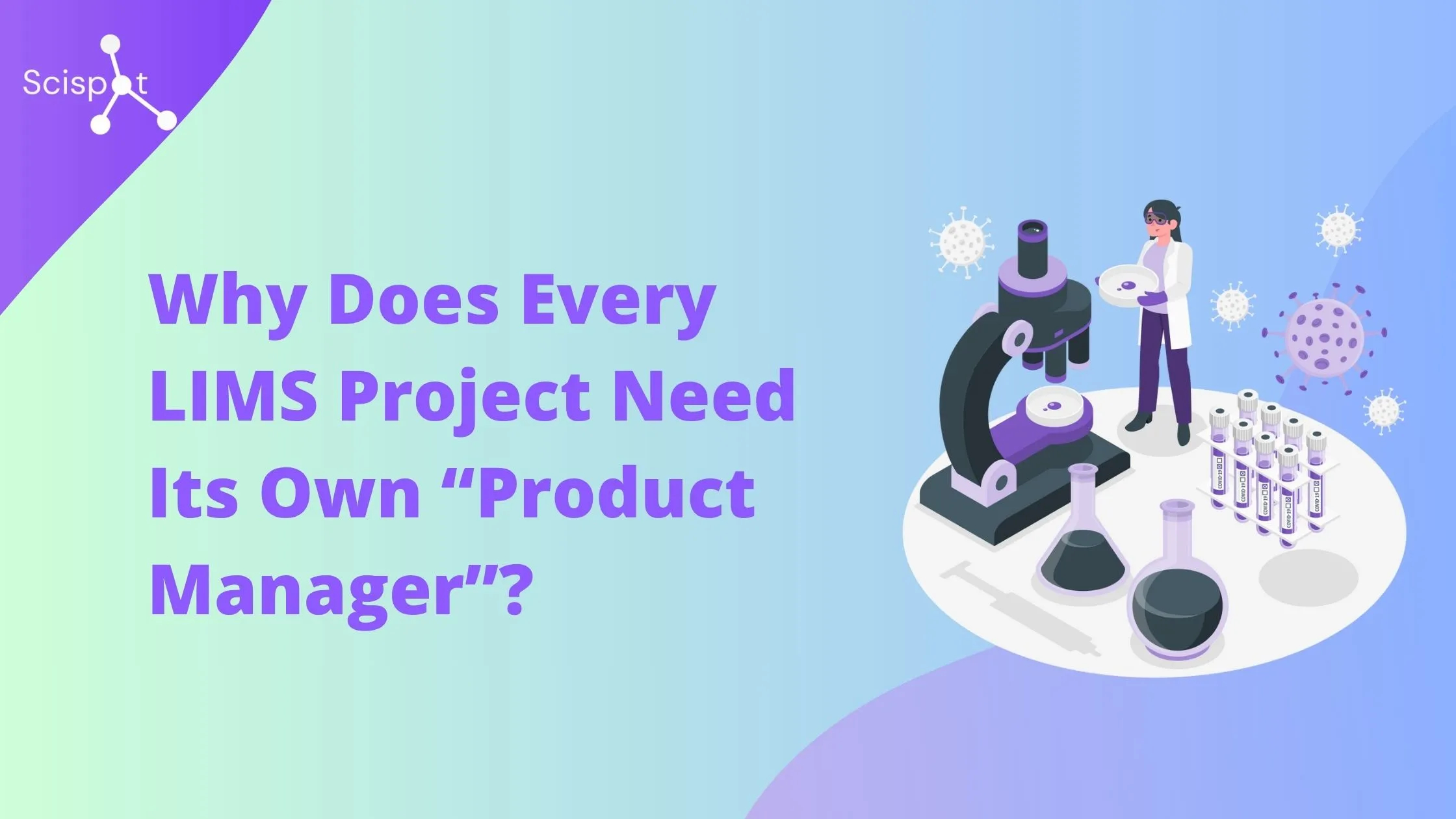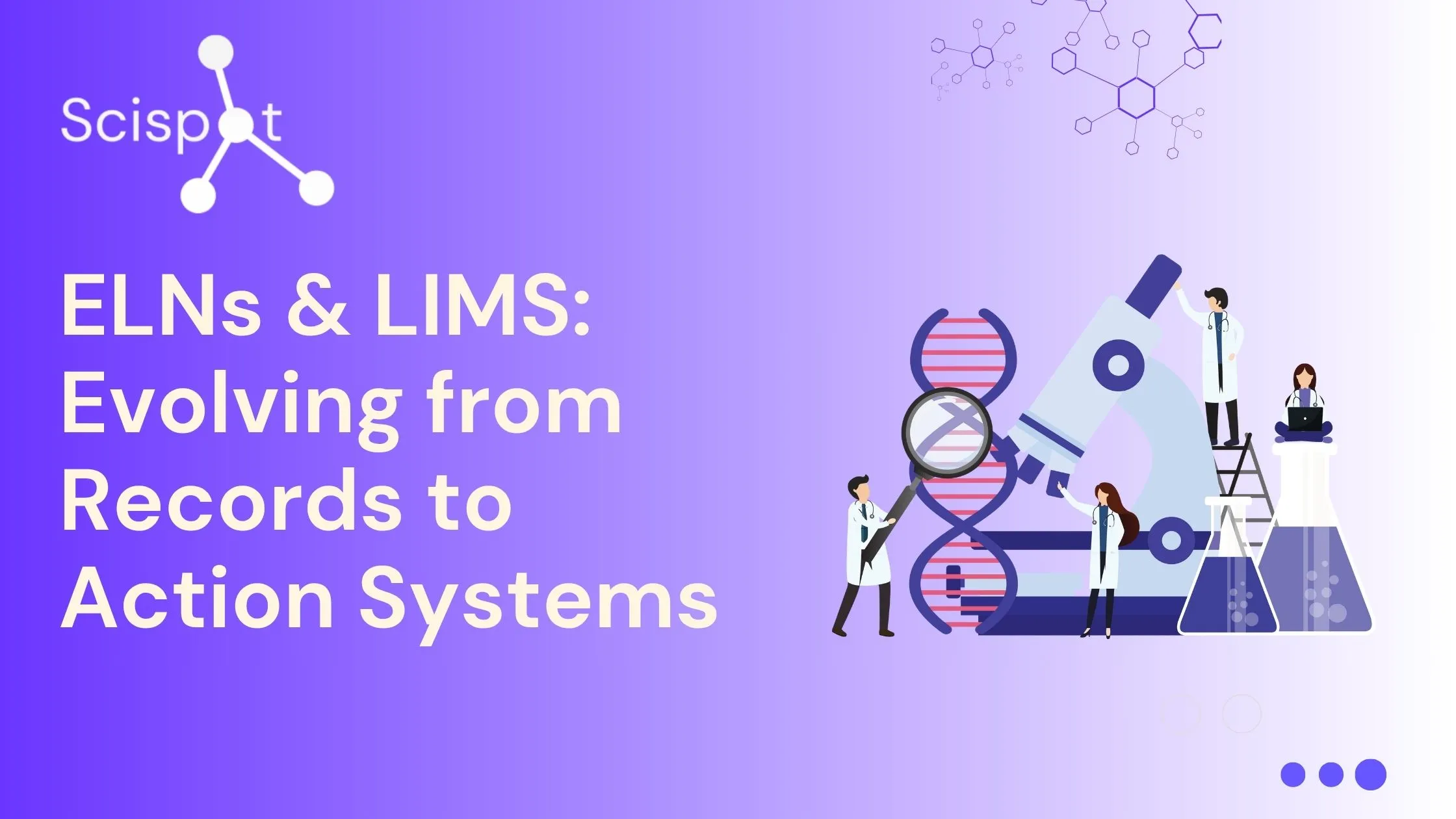I heard that on ChatGPT. I also heard that on TikTok.
Jokes apart, as LLMs are getting democratized, building applications has become so much easier. Just as PCR revolutionized molecular biology, LLMs are transforming data management in wet labs.
As the application layer is getting democratized, the data infrastructure, and biological data cleansing becomes way more important. This is akin to the shift from manual record-keeping to advanced lab informatics in wet labs.
That is why we need to define a new category of alt-ELN and alt-LIMS that acts more like a data infrastructure like Scispot. Think of this as the difference between traditional agarose gel electrophoresis and high-throughput next-generation sequencing.

This year we onboarded a lot of labs in North America and Europe and there was a common theme we heard when it comes to alt-ELN and alt-LIMS:
- How do I mold my workflow in my ELN, so I can easily track my chain of custody? Like how you track a sample from extraction to analysis.
- How do I connect my homegrown LIMS with an ELN so that I can automate my commercial report creation? Imagine seamlessly integrating your sample storage system with analytical reports.
- How do I build visual knowledge graphs so I can track the journey of my samples from one experiment to the next? Like visualizing a sample's path from DNA extraction to sequencing.
- I prefer alt-ELN and alt-LIMS over traditional old school ELN and LIMS. I am sensitive to paying the price for onboarding ELN and LIMS that don't have connectivity with my internal systems, much like preferring integrated lab instruments over standalone devices.
How do I define alt-ELN and alt-LIMS?
Before cars, we had horses. In the future we will have autonomous cars without drivers. I think this is evolution. Like moving from manual pipetting to automated liquid handlers.
We took notes on paper, then moved onto electronic systems to manage our data and workflows. Similarly, alt-ELN and alt-LIMS are evolving as data infrastructures that can easily stitch with your in-house systems by being API-first, and focusing on both GUI and CLI. This is like the evolution from hand-written lab notebooks to digital data management systems.
What is modern LIMS or alt-LIMS? Check out this video-
Here are the key advantages of alt-ELN and alt-LIMS whether you build them in-house or buy Scispot subscription:
- You don’t need to retrofit your workflow into the designated architecture of the alt-LIMS system. It is flexible enough that you can use APIs to easily define your schema and data dictionary. This is akin to customizing your lab's data management system to fit your specific research needs.
- Lab sample tracking becomes a breeze as alt-ELN and alt-LIMS are not just about capturing data but also understanding the connectivity between disparate sources of data starting from instruments, to registries and entries. It's like having a unified system that tracks your samples from storage to analysis.
- The focus of alt-ELN & alt-LIMS is creating your schema and data dictionary for data science and ML. It is inherently designed for modern Biotech.
LIMS software price should not be half a million dollars for your enterprise in 2024
You shouldn’t pay a hefty price as you scale. Most traditional ELN and LIMS become hugely expensive (from $100K to $1M) as you scale your teams, data, and software. In this “alt” world of innovation, you don’t need to pay that much for your data connectivity and insights. alt-ELN and alt-LIMS need to be way more cheaper as you scale your data infrastructure as they are built with orchestration and API-first from ground up. It's like scaling up your lab operations without exponentially increasing costs.
Scispot launched the following features in 2023 to redefine the category of alt-ELN and alt-LIMS, so our customers can build their proprietary data schema in Scispot.
- Introduction of knowledge graphs: Scispot now lets bio companies create their proprietary ontologies by easily connecting unstructured data with structured data. Think of it as creating a detailed map of your research data and findings.

- Introduction of Magic Labsheets: This is reporting on steroids. AI automatically creates Magic system-generated Labsheets summarizing your most important work. Whether you need to track your inventory usage, or hours per experiment, you can easily do it without worrying about any data entry errors, like having a smart assistant to handle routine lab documentation.

- GLUE - Instrument integration with one-click connectors: You can directly connect Scispot’s manifest (plates) with instruments. We made qPCR integration seamless, as straightforward as linking your PCR machine to your data system.
- Inventory automation using AI: Scispot notebook detects what inventory was used automatically, but also gives an opportunity for a human in the loop to verify the automation. It's like having an intelligent inventory system that not only tracks but also predicts your needs.

- AI-assist scientific databases: Scispot suggests what schema your team would benefit from while building your own alt-LIMS along with the ability to connect those databases with unique identifiers. It's like custom-designing a database specifically tailored for your lab's unique requirements. More to come on this in early 2024!
And many more features… I wanted to highlight the top 5 that are my favorite.
With all these features, I think Scispot fits into the alt-ELN & alt-LIMS category and converges into a data infrastructure for biology. If you are interested in building or configuring your own alt-ELN or alt-LIMS using Scispot data infrastructure, please reach out to us!












